Introduction
Norway, the land of majestic fjords, dramatic mountains, and shimmering Northern Lights, offers breathtaking beauty year-round. However, choosing the best time to visit Norway can transform your trip into an unforgettable adventure. Each season brings its unique charm, from snow-covered landscapes in winter to vibrant blooms in spring. Timing your visit ensures you experience Norway’s highlights, like the Midnight Sun, Aurora Borealis, or iconic fjord cruises.
This guide will explore Norway’s seasons, revealing the best activities and destinations for every traveler. Whether you’re chasing the Northern Lights in Tromsø, hiking Trolltunga under summer skies, or enjoying fall colors in the fjords, this article helps you plan the perfect getaway. Discover why the best time to visit Norway depends on what you want to see and do, ensuring a magical trip filled with unforgettable moments.
Here is an expanded version of the section, incorporating more transition words to meet your requirement:
Discover the Best Time to Visit Norway by Season
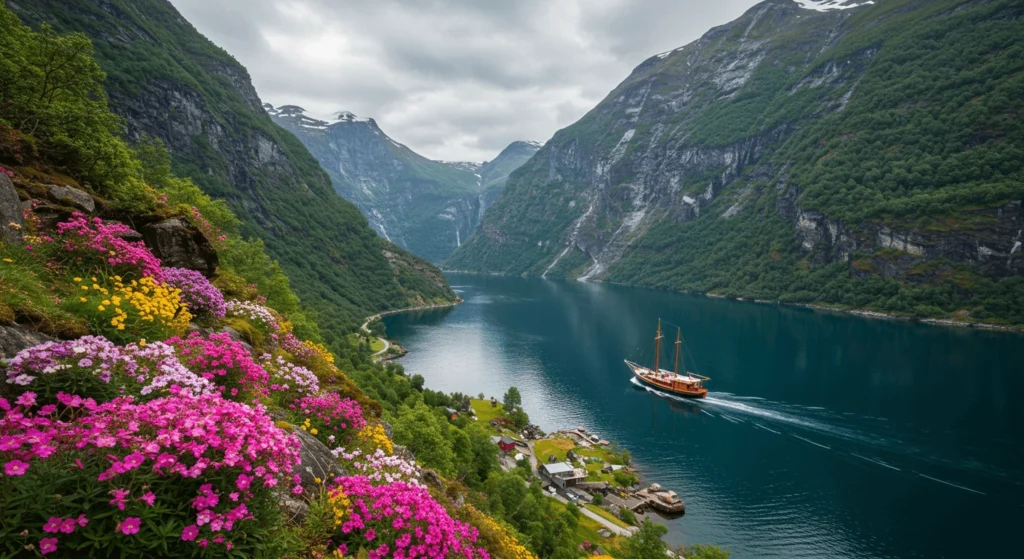
Winter (December to February): The Best Time to Visit Norway for Northern Lights
Winter in Norway offers a magical experience, especially for those seeking the Northern Lights. Tromsø and Svalbard, for instance, are two of the best destinations for spotting the Aurora Borealis. Because the nights are long and dark, conditions are ideal for witnessing this breathtaking natural phenomenon. Additionally, winter activities such as skiing in Trysil, dog sledding across frozen landscapes, and snowmobiling in Arctic regions add to the adventure.
Meanwhile, the Lofoten Islands transform into a snowy paradise, where jagged peaks contrast beautifully with icy waters. Furthermore, photographers will appreciate the ethereal light of the polar night, which creates surreal opportunities for capturing unforgettable images. Since winter tends to attract fewer tourists, this season is perfect for those who prefer serene and quieter travel experiences.
Spring (March to May): The Best Time to Visit Norway for Blooming Fjords
Spring in Norway is a time of renewal and beauty, as the country awakens from winter’s grasp. For example, the Hardangerfjord region bursts to life with blooming apple orchards, painting the landscape in shades of pink and white. Moreover, thawing snow gives way to gushing waterfalls, including the famous Vøringsfossen, which becomes even more captivating during this season.
In addition, traveling in spring means fewer crowds at popular attractions, such as Flåm and Geirangerfjord. Not only is it quieter, but it is also more budget-friendly, with reduced accommodation prices and airfare. Therefore, spring is an excellent time for scenic drives, like the Hardanger National Tourist Route, where you can marvel at both blooming wildflowers and thawing fjords.
Summer (June to August): The Best Time to Visit Norway for Outdoor Adventures
Summer is undoubtedly Norway’s busiest season, and for good reason. Above the Arctic Circle, the Midnight Sun provides endless daylight, allowing visitors to maximize their adventures. For example, this is the ideal time to tackle iconic hikes, such as Trolltunga, Pulpit Rock, or Besseggen Ridge. Additionally, water enthusiasts can enjoy kayaking in Sognefjord or taking scenic cruises in Geirangerfjord.
Urban travelers, on the other hand, can explore Oslo’s lively waterfront or Bergen’s historic Bryggen Wharf under sunny skies. Meanwhile, summer festivals celebrating the solstice provide an excellent opportunity to experience Norwegian culture firsthand. Thanks to the warm weather and extended daylight, summer ensures that every traveler, whether a nature lover or a city explorer, can enjoy Norway at its best.
Autumn (September to November): Norway’s Best Time for Fall Colors
Autumn in Norway delivers a spectacular display of colors as vibrant reds, oranges, and yellows dominate the landscape. In fact, national parks like Rondane and Jotunheimen become even more stunning, with colorful foliage enhancing every hiking trail. Simultaneously, fjords reflect these vivid hues, creating breathtaking vistas perfect for landscape photography.
Because autumn is less crowded, it offers a tranquil atmosphere for exploring. For example, travelers can wander through quiet villages or enjoy seasonal Norwegian dishes, such as reindeer stew. Moreover, the mild weather ensures that outdoor activities remain enjoyable, while soft light and misty mornings add a mystical charm to every scene.
Best Time to Visit Norway for the Northern Lights
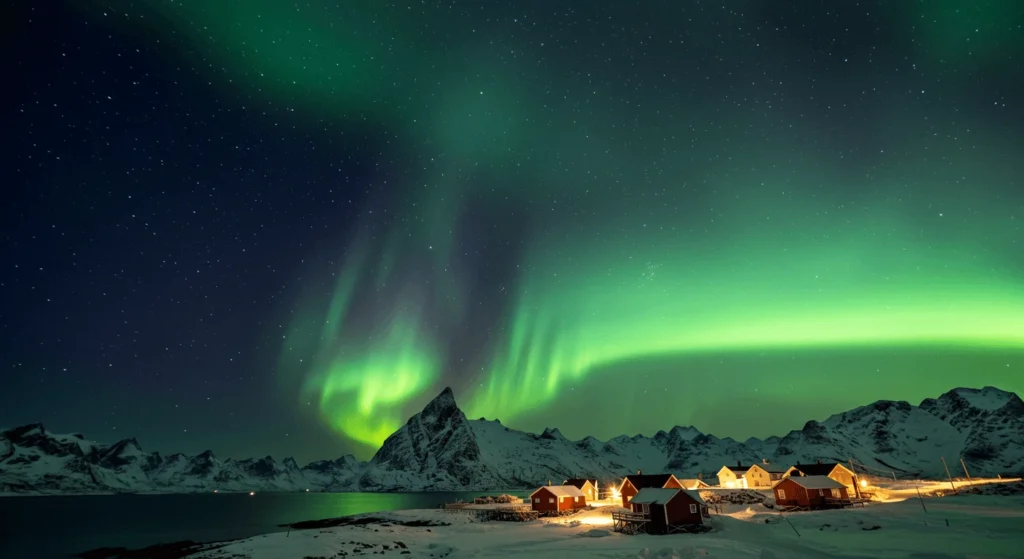
Optimal Months to Experience the Northern Lights in Norway
The Northern Lights, or Aurora Borealis, are a must-see natural wonder, making Norway a top destination for this magical phenomenon. The best months to visit Norway for the Northern Lights are from September to March, when the nights are longest and darkest. During this time, clear skies and the reduced impact of daylight hours offer the perfect opportunity to witness this spectacle.
Among the top locations, Tromsø is considered the capital of the Northern Lights, thanks to its position within the auroral oval. Alta is another popular spot, offering Northern Lights observatories and fewer crowds. If you venture deeper into the Arctic Circle, places like Svalbard provide unparalleled opportunities to experience the lights. These regions not only offer excellent viewing conditions but also a range of activities to complement your trip, including cultural experiences and Arctic cuisine.
The Perfect Conditions for Seeing the Aurora Borealis
To maximize your chances of seeing the Aurora Borealis, you need clear, dark skies free from light pollution. Head to remote areas outside major cities where artificial light is minimal. For example, Tromsø’s nearby islands, such as Kvaløya, offer pristine conditions for viewing the lights.
Another critical factor is solar activity, which influences the intensity and frequency of the Aurora. Keep an eye on geomagnetic forecasts and apps like Aurora Forecast, which provide real-time updates. Timing is everything; the best hours to observe are usually between 10 p.m. and 2 a.m., when the skies are at their darkest.
Additionally, the weather plays a significant role. Winter months, though colder, often bring clearer skies in northern regions. Dress warmly with insulated layers, and be prepared to wait outside for extended periods. Finally, joining guided tours with local experts can help you find the best spots and conditions for viewing.
Planning Your Trip Around the Best Time to Visit Norway
A successful Northern Lights trip involves thoughtful planning and flexibility. Combining your quest for the lights with other winter activities can enhance your experience. For instance, dog sledding under the Arctic sky, snowmobiling in the wilderness, or staying in a glass-roofed igloo can make your trip unforgettable.
Capturing the Aurora on camera requires preparation. Use a DSLR or mirrorless camera with manual settings to adjust exposure and ISO for low-light conditions. A sturdy tripod is essential for stability, as you’ll need long exposure times. Experimenting with settings like ISO 1600 and a shutter speed of 10-20 seconds often yields great results.
If you’re visiting during a short window, consider booking a multi-day Northern Lights tour. These tours often include transportation, ensuring you can reach prime viewing locations even in changing weather.
The Best Time to Visit Norway’s Scenic Destinations
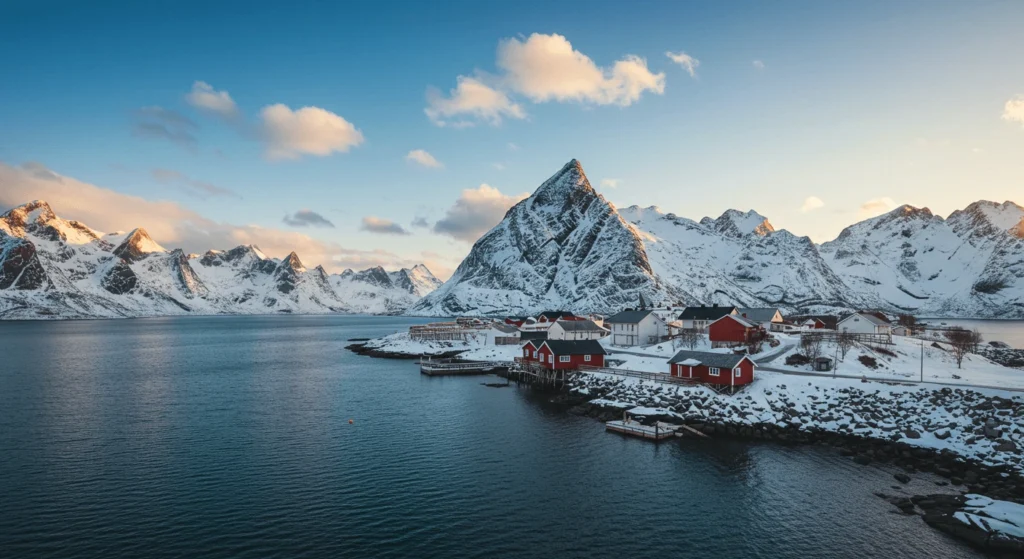
Summer Fjord Adventures: When to Visit Norway’s Iconic Fjords
Summer is the best time to experience Norway’s iconic fjords, thanks to the long days and mild temperatures. Fjords like Sognefjord, Geirangerfjord, and Nærøyfjord are particularly breathtaking during this season. These waterways, surrounded by towering cliffs and cascading waterfalls, are perfect for scenic cruises that showcase Norway’s natural beauty.
For adventure seekers, kayaking along the calm fjord waters provides a unique perspective of the landscape. Additionally, hiking opportunities abound, with trails like The Aurlandsdalen Valley and Skageflå Farm offering panoramic views of fjords and valleys. Furthermore, the Geiranger Skywalk allows visitors to marvel at the fjord’s grandeur from above.
If you’re planning a visit, consider combining a fjord cruise with nearby attractions like the Flåm Railway, which is one of the world’s most scenic train journeys. Summer festivals, including the Fjord Norway Music Festival, add a cultural touch to your trip.
Winter Escapes: Norway’s Best Snowy Landscapes
Winter transforms Norway into a snowy wonderland, especially in Arctic towns like Tromsø and Kirkenes. These destinations offer unparalleled opportunities for winter activities, including dog sledding, snowshoeing, and ice fishing. Additionally, visitors can enjoy a stay in an ice hotel, like the Snowhotel Kirkenes, for a truly unique Arctic experience.
The Lofoten Islands, blanketed in snow, present picturesque villages with red cabins that contrast beautifully against the icy blue waters. Photographers will love capturing the dramatic peaks and pristine fjords under the soft winter light. Moreover, the islands are a great spot to see the Northern Lights dancing across the sky.
For an unforgettable journey, consider traveling on the Hurtigruten Coastal Express, which navigates Norway’s fjords during the winter months. This voyage combines snowy landscapes with cozy onboard experiences, offering a perfect blend of adventure and relaxation.
Hidden Gems in Autumn and Spring: Offbeat Norway Destinations
Autumn and spring are ideal for discovering Norway’s lesser-known but equally stunning destinations. During autumn, Jotunheimen National Park becomes a haven for nature lovers, as the vibrant fall foliage frames the dramatic peaks and serene lakes. Hiking trails like Besseggen Ridge offer breathtaking views and a quieter experience compared to the busy summer months.
In spring, Hardangervidda, Europe’s largest mountain plateau, offers a serene escape as wildflowers bloom and wildlife, including reindeer, emerges from winter. The thawing snow creates cascading waterfalls, such as Vøringsfossen, which is particularly impressive during this season.
Additionally, smaller towns like Røros, a UNESCO World Heritage site, provide a glimpse into Norway’s cultural heritage. Visiting these offbeat locations during shoulder seasons means fewer crowds and the chance to experience Norway’s tranquility.
Practical Tips for Planning the Best Time to Visit Norway
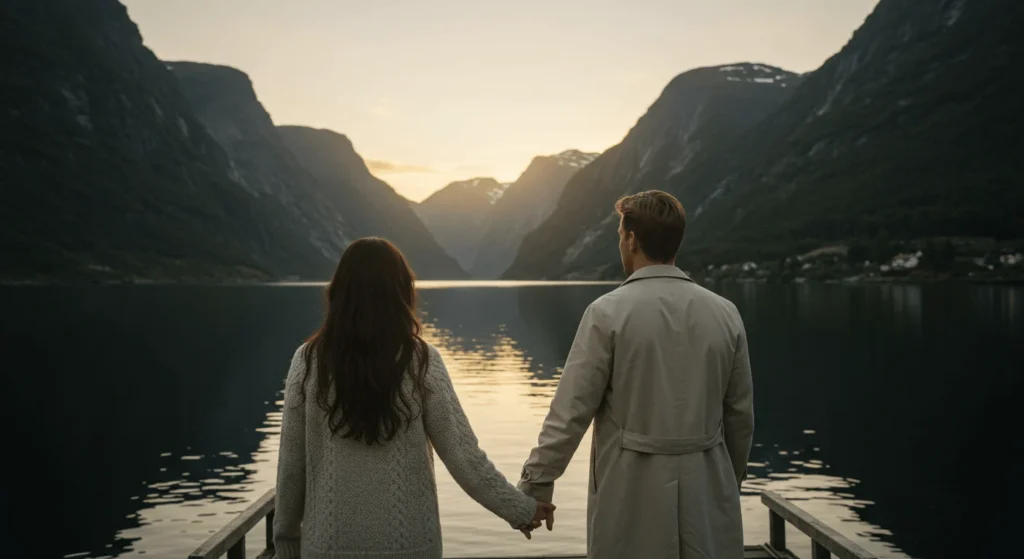
Booking Flights and Accommodations in Advance
Planning your trip to Norway well in advance can save you money and ensure a smoother experience. To secure affordable travel deals, start searching for flights at least three months before your trip. Airlines like Norwegian Air and SAS often offer discounts during sales, especially in the off-peak seasons. For peak summer months, booking six months ahead is highly recommended, as demand for flights and accommodations skyrockets.
During off-peak seasons, such as spring and autumn, both airfare and hotel prices tend to be more budget-friendly. Additionally, consider alternative accommodations like cabins or vacation rentals on platforms such as Airbnb for a more authentic Norwegian experience. Popular destinations like Tromsø and Bergen fill up quickly, so booking early ensures you get your preferred lodging.
Packing for Norway’s Seasons: What to Bring
Packing for Norway requires careful consideration, as the weather can be unpredictable. For winter trips, thermal layers, insulated jackets, waterproof boots, gloves, and a hat are essential. Don’t forget crampons or ice grips if you plan to explore icy trails.
During summer, pack breathable layers, waterproof jackets, sturdy hiking boots, and sunscreen to prepare for both warm days and sudden rain. Spring and autumn demand a mix of warm and waterproof clothing, as temperatures can vary significantly throughout the day. A lightweight backpack is useful for carrying essentials during hikes or day trips.
Always pack a reusable water bottle, as Norway’s tap water is safe to drink and environmentally friendly. Additionally, include a power adapter for European outlets and portable chargers to stay connected during your adventures.
Exploring Norway: Transportation Options for Scenic Travel
Norway offers diverse transportation options, allowing you to explore its stunning landscapes with ease. Train journeys, such as the Flåm Railway and the Bergen Line, are among the most scenic in the world. These routes offer panoramic views of fjords, mountains, and valleys, making them a must-try experience.
For maximum flexibility, renting a car is the best option, especially if you plan to visit remote areas like the Lofoten Islands or Jotunheimen National Park. Norway’s roads are well-maintained, and driving offers the freedom to stop at picturesque spots along the way. Be aware, however, of tolls and the high cost of fuel, which can add to expenses.
For those who prefer a more relaxed pace, the Hurtigruten Coastal Express is an excellent choice. This iconic ferry service connects cities and towns along the coast, offering a unique perspective of Norway’s shoreline. Additionally, buses and public transport are reliable and convenient, especially in urban areas like Oslo and Bergen.
FAQs: Answering Questions About the Best Time to Visit Norway
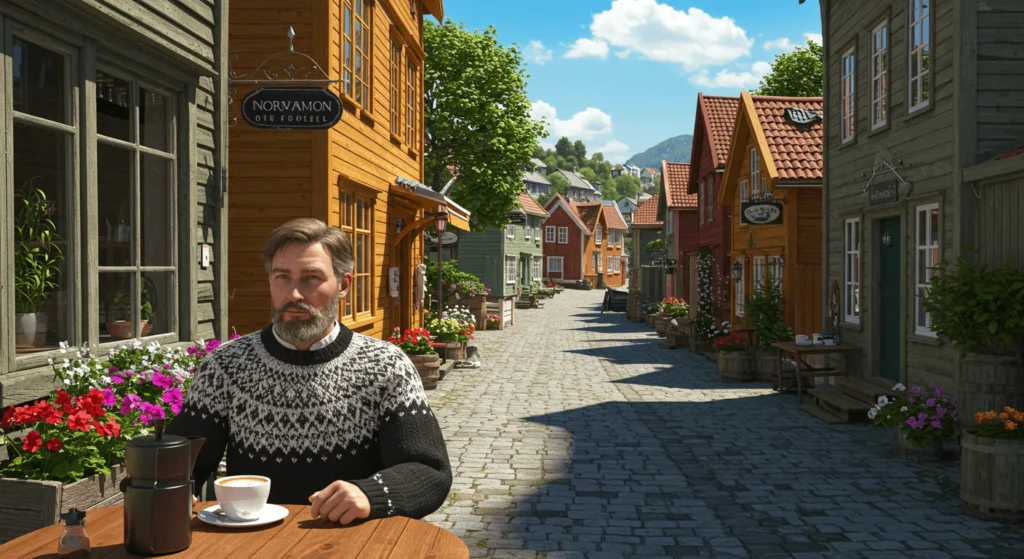
What Is the Absolute Best Time to Visit Norway?
Determining the absolute best time to visit Norway depends largely on your interests and preferred activities. For example, summer (June to August) is ideal if you want long days, warm weather, and outdoor adventures like hiking Trolltunga or kayaking in Sognefjord. On the other hand, winter (December to February) is perfect for those seeking the Northern Lights, snowy landscapes, and activities like dog sledding in Tromsø.
Spring (March to May) and autumn (September to November) are excellent for quieter, budget-friendly trips, offering beautiful blooming flowers or vibrant fall colors. Additionally, these shoulder seasons allow you to explore fjords and national parks without the summer crowds. Therefore, the “best time” varies depending on what you hope to experience during your trip to Norway.
Can You See Both the Midnight Sun and Northern Lights?
Experiencing both the Midnight Sun and the Northern Lights during the same trip is challenging due to their seasonal nature. The Midnight Sun occurs during summer, primarily from late May to late July, when the sun remains visible above the horizon in the Arctic Circle. For example, Tromsø and the Lofoten Islands are fantastic spots to witness this natural phenomenon.
The Northern Lights, however, are best viewed from September to March when the nights are long and dark. Although there is a slight overlap in late August and early September, this period isn’t optimal for either experience. Therefore, if you want to enjoy both, planning two separate trips during the correct seasons is highly recommended.
How Does Weather Impact the Best Time to Visit Norway?
Norway’s weather varies greatly depending on the season and region, so understanding these differences can help you plan better. Coastal areas, such as Bergen and Ålesund, experience milder winters but frequent rainfall due to their proximity to the Gulf Stream. In contrast, inland regions like Oslo and Lillehammer are colder in winter, with snow-covered landscapes ideal for skiing.
During summer, the coastal weather is warm and pleasant, with temperatures averaging 15–20°C (59–68°F), making it perfect for fjord cruises and outdoor activities. However, inland areas can be slightly warmer, with more stable weather for hiking. Spring and autumn bring more unpredictable conditions, including sudden rain showers and fluctuating temperatures, so packing layers is essential.
While Norway’s weather can be unpredictable, it’s always manageable with proper preparation. Regardless of the season, staying updated on local forecasts helps ensure a safe and enjoyable trip.
Conclusion
Norway is a country of extraordinary beauty, offering unforgettable experiences year-round. The best time to visit Norway depends on your interests and the activities you wish to enjoy. For instance, summer (June to August) is perfect for exploring iconic fjords, hiking trails like Trolltunga, and experiencing the Midnight Sun above the Arctic Circle. In contrast, winter (December to February) is ideal for witnessing the magical Northern Lights and enjoying snow-based activities in Tromsø and the Lofoten Islands.
Spring (March to May) and autumn (September to November) provide quieter travel opportunities with stunning scenery. During spring, blooming wildflowers and thawing fjords create picturesque landscapes, while autumn offers vibrant fall colors in national parks like Rondane and Jotunheimen. No matter the season, Norway guarantees breathtaking vistas, rich cultural experiences, and countless outdoor adventures.
Start planning your trip today to discover Norway’s stunning scenery at its best. Whether you dream of cruising the Geirangerfjord, hiking in Hardangervidda, or capturing the Aurora Borealis, the possibilities are endless. With thoughtful preparation and a clear understanding of seasonal highlights, you can create a trip tailored to your preferences and budget.
Ready to chase the Northern Lights or hike Norway’s spectacular landscapes? Check out our detailed post on the best times and tips for viewing the Aurora Borealis. Begin your adventure now and let Norway’s unmatched beauty leave you in awe.